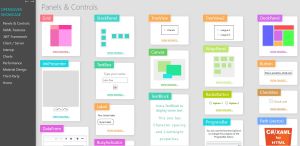News
OpenSilver 2.2 Aims to Revive Visual Studio LightSwitch Legacy Apps
OpenSilver 2.2 debuted today with a focus on helping developers revive Visual Studio LightSwitch legacy applications.
OpenSilver was created as an open source alternative to Microsoft Silverlight, a popular, cross-platform web application framework for creating multimedia-rich and interactive web applications that was discontinued by the company, causing much developer angst. It lets developers write web applications using .NET, C# (or VB.NET or F#) and XAML, like Silverlight.
In the new release, announced today (April 30) by Userware, the focus is on LightSwitch, a circa 2010 no-code, drag-and-drop, rapid-development tool in the Visual Studio family that was aimed at developers who wanted to quickly create data-centric business applications for the desktop and the cloud. It was powered by the discontinued Silverlight plugin.
Microsoft has said there are now more connected and relevant choices for business app development, and it no longer recommends LightSwitch for new apps.
Legacy apps remain, though, and OpenSilver 2.2 seeks to help developers maintain and modernize them by, for example, enabling them to run on modern browsers via a new LightSwitch Compatibility Pack, available for trial signup.
Now, the company said, organizations can port legacy apps rather than rewrite them while maintaining the functionality and look of the original apps.
 [Click on image for larger view.] OpenSilver Showcase (source: Userware).
[Click on image for larger view.] OpenSilver Showcase (source: Userware).
That's done by enabling developers to compile existing LightSwitch applications to modern technologies including HTML5 and WebAssembly, which lets the apps run on all modern browsers -- including Edge, Chrome, Firefox, Safari and Opera -- without any plugins.
Userware said migrating apps with the LightSwitch Compatibility Pack offers these advantages over a full rewrite:
- Cost Efficiency: Migration is significantly less expensive than rewriting applications from scratch.
- Speed: Transition timelines are drastically reduced.
- Risk-Free: A guaranteed fixed price for end-to-end migrations, ensuring that there are no financial surprises.
- Fidelity: The migrated applications are indistinguishable from the original, both in terms of functionality and GUI.
- No User Retraining Needed: Since the application remains the same, there is no need for end-user training.
Regarding bullet point No. 3 above, while the project is open source, Userware offers for-pay services for help with migration along with professional service subscriptions that provide, for example, consulting.
The tool is not yet integrated with Visual Studio 2022, with the company saying: "Currently, the LightSwitch Compatibility Pack for OpenSilver 2.2 supports the runtime environment for LightSwitch applications.
"While the Visual Studio editor for drag-and-drop app creation has not yet been ported to OpenSilver, developers can continue using the LightSwitch editor in the legacy Visual Studio. We have plans to integrate this functionality in our roadmap, aiming to provide a seamless development experience across all platforms."
That roadmap also includes:
- Drag-and-drop XAML UI Designer: Streamlining the UI development process for a more intuitive design experience.
- .NET MAUI Integration: Enabling the creation of applications that can run across iOS, Android, Mac, and Windows platforms.
- XAML Hot Reload, CLI, VS Code, macOS, and Rider Support: Enhancing productivity and flexibility in development environments.
The post includes links to live demo sample applications, before and after migration.
About the Author
David Ramel is an editor and writer for Converge360.